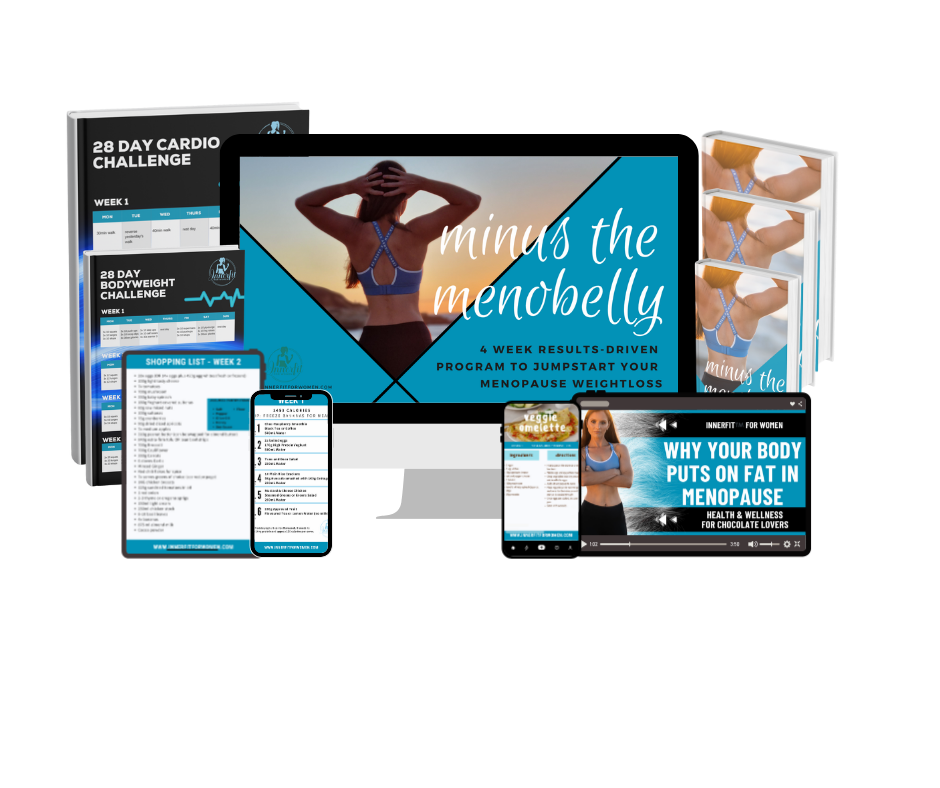How Does Ozempic Work for Weight Loss in Women Over 40?
- Innerfit For Women

- Aug 10
- 3 min read
If you’ve searched “how does Ozempic work,” you’re not alone—and if you're a woman over 40 struggling with weight gain during perimenopause or menopause, this question might feel even more urgent. Ozempic has become a buzzword in the weight loss world, but what is it really, and is it right for you?
Let’s break it down in a way that actually makes sense—no medical jargon, just real answers for real women.

What Is Ozempic, Exactly?
Ozempic (semaglutide) is a prescription medication originally developed to help people manage type 2 diabetes. It's a GLP-1 receptor agonist, which basically means it mimics a hormone your body naturally produces after eating—helping to regulate blood sugar levels and appetite.
But in recent years, doctors have noticed something else: people taking Ozempic started losing weight—a lot of it. That’s why it’s now being prescribed off-label (or through its sister drug Wegovy, which is FDA-approved for weight loss) to help people shed pounds.
How Does Ozempic Work for Weight Loss?
Here’s what happens when you take Ozempic:
✅ You feel fuller, faster. Ozempic slows down how quickly food leaves your stomach, so you stay satisfied longer and are less likely to overeat.
✅ It reduces appetite. You’ll probably notice fewer cravings—especially for carbs and sweets.
✅ Blood sugar stays more stable. That’s important for energy, mood, and weight regulation—especially during menopause, when insulin resistance often increases.
The result? Most people eat less without even trying to “be good” or count every bite.
Why This Matters for Women Over 40
If you’re in perimenopause or menopause, your body is already going through major changes:
Hormones like estrogen and progesterone are fluctuating (or plummeting).
Your metabolism may feel slower.
You might notice more belly fat—even if you haven’t changed a thing.
This isn’t about willpower. It’s biology.
And that’s where Ozempic can feel like a game-changer—it works with your body’s hormones, which is something diet culture has never really addressed.
The Catch: Ozempic Isn’t a Magic Pill
Here’s the honest truth: Ozempic helps with weight loss, but it doesn’t fix everything.
Many women lose weight quickly on it, but without the right lifestyle support—like eating enough protein, managing stress, and maintaining muscle—you can end up losing muscle mass, feeling drained, or regaining the weight when you stop.
Also, some women experience side effects like nausea, constipation, or fatigue.
And finally, it can be expensive and isn’t always covered by insurance.
Should You Try Ozempic?
It depends. If you’re over 40, struggling with weight that won’t budge, and feeling defeated after trying “all the things”—Ozempic might be a helpful tool. Especially if:
You have signs of insulin resistance (belly fat, sugar cravings, energy crashes)
You’ve been diagnosed with prediabetes or type 2 diabetes
You’re under a doctor’s care and committed to building sustainable habits
But Ozempic is not a shortcut. We’ve helped hundreds of women lose weight naturally—without extreme cardio, crash diets, or relying on injections. And for many, that feels more empowering and more sustainable.
Bottom Line: Ozempic Can Help, but You Still Need a Plan
If you came here wondering “how does Ozempic work?”, now you know: it works with your body’s hormones to help regulate appetite, stabilize blood sugar, and promote weight loss. For women over 40, that can be a powerful shift.
But whether you take Ozempic or not, long-term success comes from:
Eating in a way that balances hormones (not restricts calories)
Strength training to protect your metabolism
Managing stress and sleep—two silent saboteurs of weight loss
You don’t have to choose between doing it alone or relying on medication. There’s a balanced, realistic path—and we’re here to help you find it.






Comments